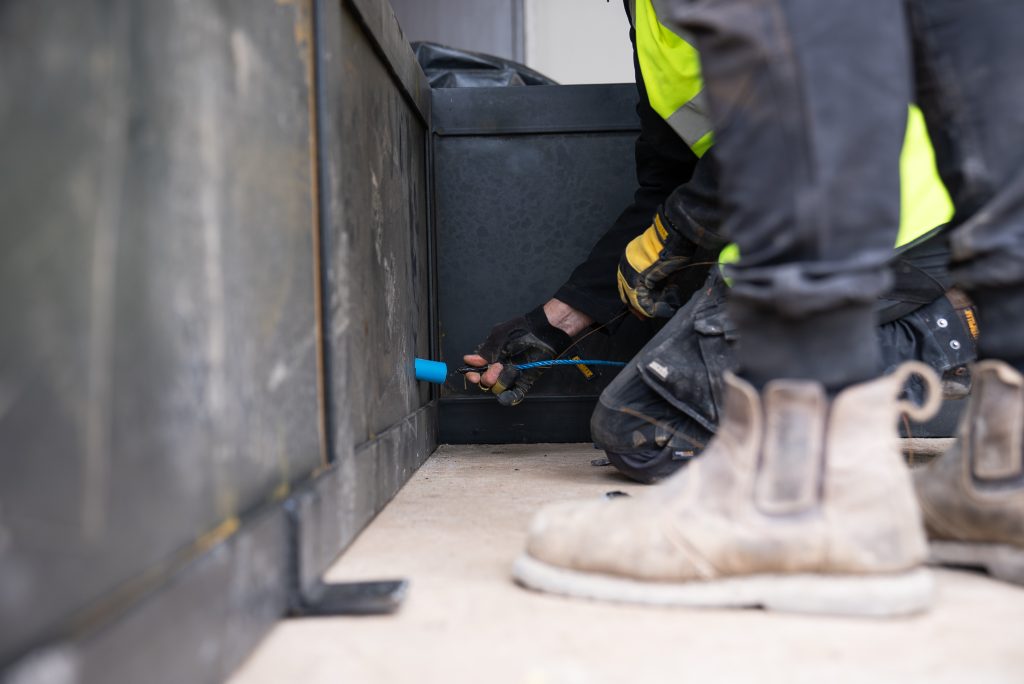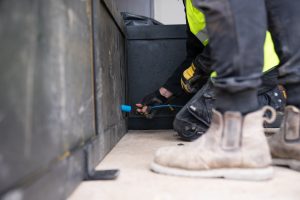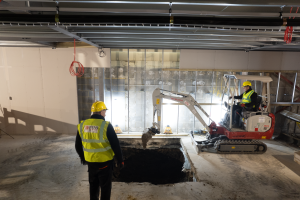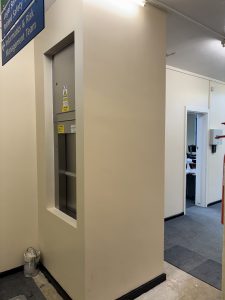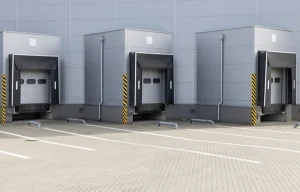When it comes to industrial or commercial facilities, a dock leveller plays a vital role in ensuring safe and efficient loading and unloading. But the dock leveller is only as good as the pit that supports it. At PRNS Building Services, we’ve delivered dock leveller pit construction and repair projects across the UK, and there are several critical factors you should consider to ensure success.
1. Health & Safety & Site Preparation
Before any concrete is poured or repairs begin, establishing a secure working area is essential. At PRNS, this starts with our bespoke hoardings, providing safe and clearly defined barriers that protect both the public and site teams. Combined with controlled pedestrian and vehicle access, dust management, and clear communication of risks, our hoardings form part of our full turnkey approach, ensuring safety and professionalism are embedded from the very first stage of dock leveller pit construction.
2. Assessing & Removing Damaged Concrete
Often, pit failure starts with damaged or degraded concrete through use, exposure, or heavy loading. Using petrol floor saws (and 3-10 tonne excavators, with 3-5 tonne dumpers), the damaged concrete is cut out and removed. To minimise hazards, we damp down the exposed areas to reduce dust. Proper removal of all damaged parts ensures the repair will be durable and safe.
3. Formwork & Support Structures (Shuttering & Kerb Angles)
After cleanup, it’s time to frame up the pit properly. This stage involves installing timber shuttering (formwork) and fitting kerb angles to support the edges of the pit. Good formwork ensures the concrete is shaped correctly and that edges and angles align with the dock leveller’s operation. Errors at this point can create weak spots and compromise performance under heavy loads, but at PRNS, our track record speaks for itself. With years of experience and a meticulous approach, we pride ourselves on getting it right the first time, every time.
4. Quality Concrete Pour & Finishing
The concrete pour is where structural integrity is established. PRNS uses vibration tools (e.g. a 110v vibrator) to avoid “honeycombing” – pockets of air or voids in the concrete that can compromise strength. A smooth finish once the shuttering is removed is also important for safety and durability.
5. Removal of Temporary Structures & Clean-Up
Once concrete has cured and all structural work is done, formwork (shuttering) is removed carefully. The last step is a clean down, removal of debris, tools, and temporary supports. Ensuring the work area is clean means the facility can resume operations safely, reducing downtime and ensuring functionality is restored properly.
6. Considering Load, Usage, & Future Maintenance
Aside from the build phases, it’s essential to plan for usage. What loads will the dock leveller need to bear? How frequent will truck activity be? These considerations impact the specification of concrete strength, dimensions of the pit, and type of kerb angles or support used. Also, think about maintenance access, drainage, and how future repair work can be carried out safely.
7. Choosing the Right Contractor
A dock leveller pit build or repair isn’t a “one-size-fits-all” job. You need contractors who understand both the technical and practical demands. At PRNS Building Services, we combine experience, safety, and precision. We follow a structured process (site prep – assess & cut – shutter & structure – pour – finish & clean) and tailor it to each site’s needs.
Final Thoughts
Constructing or repairing a dock leveller pit is a project that demands attention to detail, safety, and the right technical execution. Take time to plan, ensure strong foundations, and partner with experts who understand the full scope. This way, you’ll ensure a pit that performs, lasts, and keeps operations moving smoothly.
Looking to discuss your Dock Leveller needs? Get in touch with a member of our team today!

